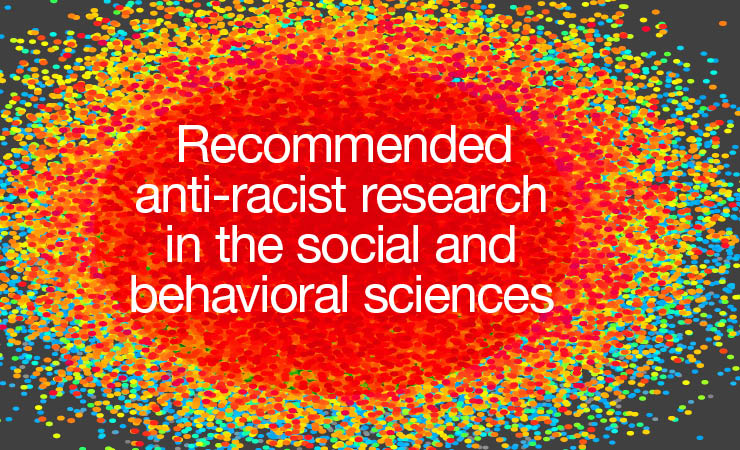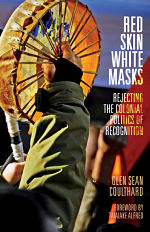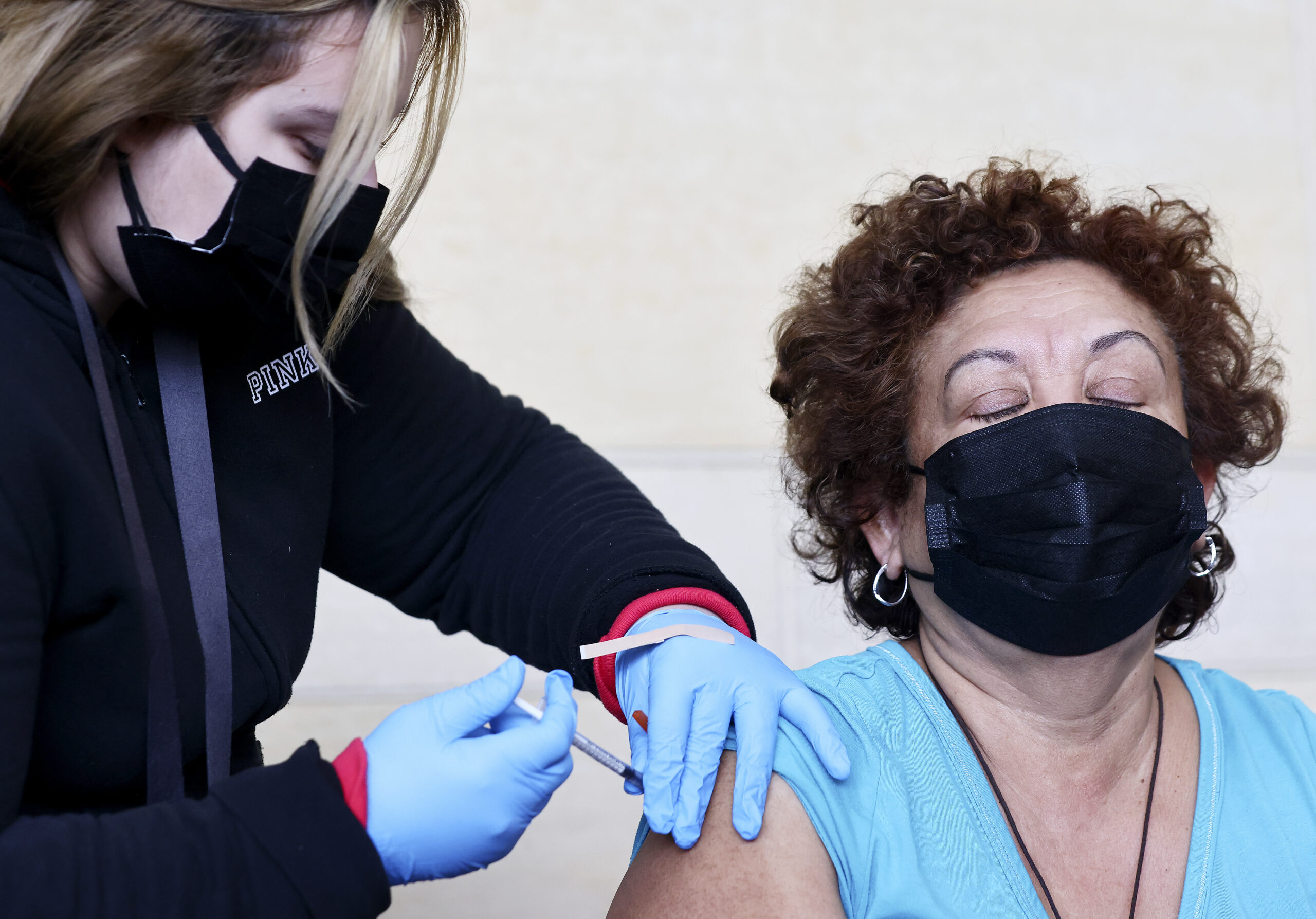Anti-Racist Social Science Books and Articles
This section of Social Science Space features some of the most important work across social science disciplines that has engaged with the ongoing need to understand, analyze, resist and dismantle the racism that continues to disfigure society and culture across the globe.
The list of most important works inevitably can be contested. Social science impact and importance has always been a source of controversy and contestation. More to the point the selection here may have had impact within the academy, in terms of citations, but insufficient visibility in society at large.
Of course, racism sits in a web of other forms of discrimination and disadvantage experienced by many other marginalized groups — a context much studied by social sciences across the disciplinary traditions, too. But here our focus is on racism and the important work in social science that addresses it.
To focus on social science is an artefact in that social science is not one thing. W E B Du Bois is described in the Stanford Encyclopedia of Philosophy as “an activist and a journalist, a historian and a sociologist, a novelist, a critic, and a philosopher.” To have a discipline focus is to reflect how most academic work is organized while recognizing John Brewer’s observation that “the world has problems, while universities have departments.” Equally, it is clear that powerful contributions to tackling racism have come from across the academy from STEM to humanities researchers and authors. And, of course, myriad voices from activists and campaigners to novelists have always been central in the fight against racism.
It also is important to say that social science has promulgated and strengthened racism and racist ideologies. Alongside ‘anti-racist’ social science there is also ‘racist’ social science. And this extends to the very nature of knowledge production including the lack of representation of Black voices in academia at all levels. These phenomena have resulted in a meta-level engagement by social scientists and some of this work is included here, too.
Ultimately, one can debate the list of titles provided below on many levels. They were generated through surveys of social scientists and by consulting expert advisors. My colleague Lina Ashour sets out some of what we learned from the answers to our survey in her blog post here.
So consider this list as a jumping off point and we welcome engagement and discussion and suggestions for additional titles to list. To curate and list some of the most important books and articles is a small effort to amplify these voices and to get policy makers, organizers, organizations both public and private as well as the general public to read and learn from these analyses, empirical results and recommendations.
Ziyad Marar
President, Global Publishing
SAGE Publishing

CONTENTS
Via the grid above, click directly to a field of interest, where pertinent books, journal articles, monographs and chapters are listed. We’d love to hear your thoughts on these choices and know what additional works or perspectives we should add to this list. Comment right here or email lina.ashour@sagepub.co.uk.
Selections highlighted in green are currently free to read. For SAGE books, free-to-view PDFs of key chapters are provided.
ANTHROPOLOGY
From Savage to Negro: Anthropology and the Construction of Race, 1896-1954 by Lee D. Baker (1998)
Black Metropolis: A Study Of Negro Life In A Northern City by St. Clair Drake And Horace R. Cayton (1945)
Living Black: Social Life in an African American Neighborhood by Mark S. Fleisher (2015)
African Images: Racism and the End of Anthropology by Peter Rigby (1996)
INTERROGATING RACISM: Toward an Antiracist Anthropology by Leith Mullings (2005)
CULTURAL STUDIES & MEDIA
Racism and Cultural Studies: Critiques of Multiculturalist Ideology and the Politics of Difference by E. San Juan Jr. (2002)
White Negroes: When Cornrows were in Vogue…and Other Thoughts on Culture Appropriation by Lauren Michele Jackson (2019)
White Balance: How Hollywood Shaped Colourblind Ideology and Undermined Civil Rights by Justin Gomer (2020)
The New Racism: Conservatives and the Ideology of the Tribe by Martin Barker (1981)
Racism and Media by Gavan Titley (2019) | Read chapters 1, 2 and 6
Race After Technology: Abolitionist Tools for the New Jim Code by Ruha Benjamin (2019)
Bearing Witness While Black: African Americans, Smartphones, and the New Protest #Journalism by Allissa V. Richardson (2020)
The New Racism: Conservatives and the Ideology of the Tribe by Martin Barker (1981)
After Empire: Melancholia or convivial culture? Chapter 3 “Has it Come to This?” by Paul Gilroy (2005)
“Old and New Identities, Old and New Ethnicities” by Stuart Hall in Culture, Globalisation and the World System edited by Anthony D. King (1991)
“New Ethnicities” by Stuart Hall in Race, Culture and Difference edited by James Donald and Ali Rattansi (1992) | View the full book
‘The Question of Cultural Identity’ by Stuart Hall in Modernity and its Futures edited by Stuart Hall, David Held and Toby McGrew (1992)
“Discourse and the Denial of Racism” by Teun A. van Dijk in Discourse and Society, 3, 87-118 (1992)
ECONOMICS
Black Wealth / White Wealth: A New Perspective on Racial Inequality by Melvin Oliver and Thomas Shapiro (2006)
From Here to Equality: Reparations for Black Americans in the Twenty-First Century by William A. Darity Jr. and A. Kirsten Mullen (2020)
“Whitewashing Capitalism: Mainstream Economics’ Resounding Silence on Race and Racism” by Tim Koechlin in the Review of Radical Political Economics (2019)
The Economics of Racism by Marcus Alexis (1998)
EDUCATION
Antiracism Education In and Out of Schools Editor Aminkeng A. Alemanji (2018)
Why Are All the Black Kids Sitting Together in the Cafeteria? by Beverly Daniel Tatum (2017)
Anti-Bias Education for Young Children and Ourselves by Louise Derman-Sparks, Julie Olsen Edwards and Catherine M. Goins (2020)
Towards a Culturally Competent System of Care: A Monograph on Effective Services for Minority Children Who Are Severely Emotionally Disturbed by Terry L. Cross and Barbara J. Bazron, Karl W. Dennis and Mareasa R. Isaacs (1989)
The silenced dialogue: Power and pedagogy in educating other people’s children by Lisa Delpit (1988)

Pedagogy of the Oppressed by Paulo Freire (1970)
Minority education and caste: The American system in cross-cultural perspective by John U. Ogbu (1978)
Black British Intellectuals and Education: Multiculturalism’s hidden history by Paul Warmington (2014)
Racism and Education: Structures and Strategies by Dawn Gill, Barbara Mayor, Maud Blair (1991) | View full text
Rationing Education: Policy, Practice, Reform and Equity by David Gillborn and Deborah Youdell (2000)
The Colour of Class: The educational strategies of the Black middle classes by Nicola Rollock, David Gillborn, Carol Vincent, Stephen J. Ball (2014)
Education and Race from Empire to Brexit by Sally Tomlinson (2019)
“A Principal’s Approach to Leadership for Social Justice: Advancing Reflective and Anti-Oppressive Practices” by Miriam Ezzani in the Journal of Education Leadership (2020)
“From Oppositional Culture to Cultural Integrity: African American Students’ Perceptions of the Activity Structure and Physical Ecology of Classrooms” by Biko Martin Sankofa, Eric A. Hurley, Brenda A. Allen and A. Wade Boykin in Urban Education (2019)
“Building the anti-racist university: next steps” by Shirley Anne Tate and Paul Bagguley in Race Ethnicity and Education (2016)
“Preparing primary trainee teachers to teach children from Black, Asian and other minority ethnic (BAME) backgrounds or groups: participation, experiences and perceptions of trainee teachers” by Sarah Brownsword in Teacher Education Advancement Network Journal (2019)
“Reframing anti-colonial theory for the diasporic context. Postcolonial Directions in Education” by Marlon Simmons and George J. Sefa Dei (2012)
HEALTH
Closing the Gap in a Generation: Health Equity through Action on the Social Determinants of Health World Health Organization (2008)
Racism: Science & Tools for the Public Health Professional Editors Chandra L. Ford, Derek M. Griffith, Marino A. Bruce and Keon L. Gilbert (2019)
“Structural Racism and Supporting Black Lives — The Role of Health Professionals” by Rachel R. Hardeman, Eduardo M. Medina, and Katy B. Kozhimannil in New England Journal of Medicine 2016)
“Understanding Associations among Race, Socioeconomic Status, and Health: Patterns and Prospects” by David R Williams, Naomi Priest, Norman B Anderson in Health Psychology (2016)
“The Public Health Critical Race Methodology: Praxis for Antiracism Research” by Chandra L Ford and Collins O Airhihenbuwa in Social Science and Medicine (2010)
“Art, Anti-Racism and Health Equity: ‘Don’t Ask Me Why, Ask Me How!’” by Derek M. Griffith and Andrea R. Semlow in Ethnicity and Disease (2020)
ORGANIZATIONS, BUSINESS AND MANAGEMENT
Race in the Marketplace: Crossing Critical Boundaries Editors Guillaume D. Johnson, Kevin D. Thomas, Anthony Kwame Harrison, Sonya Grier (2019)

“Re-imagining the marketplace: addressing race in academic marketing research” by Sonya Grier, Kevin D. Thomas & Guillaume D. Johnson in Consumption Markets & Culture (2017)
“Reproducing inequity: the role of race in the business school faculty search” by Sonya Grier and Sonja Martin Poole in Journal of Marketing Management (2020)
“Marketing Inclusion: A Social Justice Project for Diversity Education” by Sonya Grier in Journal of Marketing Education (2019)
“White Allyship of Afro-Diasporic Women in the Workplace: A Transformative Strategy for Organizational Change” by Samantha E. Erskine and Dina Bilimoria in Journal of Leadership & Organizational Study (2019)
PSYCHOLOGY & COUNSELING
Culturally Sensitive Supervision and Training: Diverse Perspectives and Practical Applications Editors Kenneth V. Hardy and Toby Bobes (2016)
Counseling the Culturally Diverse: Theory and Practice by Derald Wing Sue, David Sue, Helen A. Neville and Laura Smith (2019)
The Nature of Prejudice by Gordon W. Allport (1954)
A Dying Colonialism by Frantz Fanon, translated by Haakon Chevalier (1965)
Black Skin, White Masks by Frantz Fanon (2008; new edition)
“Racism and Psychotherapy: working with racism in the consulting room – an analytic view” by Lennox Thomas in Intercultural Therapy edited by Jafar Kareem and Roland Littlewood (1992)
Fascists: A Social Psychological View of the National Front by Michael Billig
“Understanding and using the implicit association test IV: What we know (so far) about the Method” by Kristin A. Lane, Mahzarin R. Banaji, Brian A. Nosek and Anthony G. Greenwald in Implicit Measures of Attitudes: Procedures and Controversies edited by Bernd Wittenbrink and Norbert Schwarz (2007)
Prejudice and Racism (2nd ed.) by James M. Jones (1997)
“The social identity theory of intergroup relations” by Henry Tajfel and John C. Turner in Psychology of Intergroup Relations (1986) edited by Stephen Worchel and William G. Austin
“Racial Inequality in Psychological Research: Trends of the Past and Recommendations for the Future” by Steven O. Roberts, Carmelle Bareket-Shavit, Forrest A. Dollins, Peter D. Goldie, Elizabeth Mortenson in Perspectives on Psychological Science (2020)
“Racial microaggressions against black Americans: Implications for counselling” by Derald Wing Sue, Kevin L. Nadal, Christina M. Capodilupo, Annie I. Lin, Gina C. Torino, and David P. Rivera in the Journal of Counseling & Development (2008)
“Aversive racism and selection decisions: 1989 and 1999” by John F. Dovidio and Samuel L. Gaertner in Psychological Science (2000)
“Stereotypes and prejudice: Their automatic and controlled components” by Patricia G. Devine in Journal of Personality and Social Development (1989)
“Fifty ways to leave…your racism” by Nimisha Patel and Harshad Keval in the Journal of Critical Psychology Counselling and Psychotherapy (2018)
“Cultural Humility: Introduction to the Special Issue” by Joshua N. Hook and Don E. Davis in Journal of Psychology and Theology (2019)
“Somebodiness and its meaning to African American men” by Phillip D. Johnson in Journal of Counseling & Development (2016)
POLITICS, GOVERNMENT & LAW
The Color of Law: A Forgotten History of How Our Government Segregated America by Richard Rothstein (2017)
Dark Ghettos: Injustice, Dissent, and Reform by Tommie Shelby (2018)
The Scar of Race by Paul Sniderman (1993)
Red Skin, White Masks: Rejecting the Colonial Politics of Recognition by Glen Sean Coulthard (2014)
As We Have Always Done: Indigenous Freedom Through Radical Resistance by Leanne Betasamosake Simpson (2021)
White by Law: The Legal Construction of Race by Ian Haney Lopez (2006)
Unequal Freedom: How Race and Gender Shaped American Citizenship and Labor by Evelyn Nakano Glenn (2004)
Disordered Violence: How Gender, Race and Heteronormativity Structure Terrorism by Caron Gentry (2020)
Empires of the Mind: The Colonial Past and the Politics of the Present by Robert Gildea (2019)
Racial Formation in the United States by Michael Omi and Howard Winant (2014)
With Stones in Our Hands: Reflections on Racism, Muslims and US Empire Editors Sohail Daulatzai and Junaid Rana (2018)
Inventing Latinos: A New Story of American Racism by Laura E. Gómez (2020)
Just Mercy: A Story of Justice and Redemption by Bryan Stevenson (2015)
American Apartheid: Segregation and the Making of the Underclass by Douglas S. Massey and Nancy A. Denton (1998)
A Tolerant Nation? Revisiting Ethnic Diversity in a Devolved Wales Editors Charlotte Williams, Neil Evans and Paul O’Leary (2015)
Policing the Crisis: Mugging, the State, and Law and Order, 2nd Ed. By Stuart Hall, Chas Critcher, Tony Jefferson, John Clarke, Brian Roberts (2013)
“Mapping the Margins: Intersectionality, Identity Politics and Violence against Women of Colour” by Kimberlé Crenshaw; appearing in the volume Critical Race Theory edited by Kimberlé Crenshaw, Neil T. Gotanda, Gary Peller and Kendall Thomas (1991)
Imagined Communities: Reflections on the Origin and Spread of Nationalism by Benedict Anderson (1993)
SOCIAL WORK
Anti-oppressive Practice in Health and Social Care by Viola Nzira and Paul Williams (2008)
FREE TO READ Chapter 1: Introduction to Oppression and Anti-oppression | Chapter 2: Useful Concepts in Anti-oppression
“Young African American Men and the Diagnosis of Conduct Disorder: The Neo-colonization of Suffering” by Sasha Atkins-Loria, Heather Macdonald and Courtney Mitterling in Clinical Social Work Journal (2015)
Race, Racism and Social Work: Contemporary issues and debates edited by Michael Lavalette and Laura Penketh (2013)
Teaching to Transform? Addressing Race and Racism in the Teaching of Clinical Social Work Practice by Rani Varghese (2016)
Anti-racism in Social Work Practice edited by Angie Bartolli (2013)
Asylum Seekers, Social Work and Racism by Shepard Masocha (2015)
SOCIOLOGY
The Authoritarian Personality by Theodor Adorno, Else Frenkel-Brunswik, Daniel J. Levinson, and R. Nevitt Sanford (2019)
Decolonization is Not a Metaphor by Eve Tuck and K. Wayne Yang (2012)
The White Racial Frame: Centuries of Racial Framing and Counter-Framing by Joe R. Feagin (2020)
Toward a Theory of Minority-Group Relations by Hubert Blalock (1967)

Modernity and the Holocaust by Zygmunt Bauman (1989)
Cartographies of Diaspora: Contesting Identities by Avtar Brah (1996)
Stigma: Notes on the Management of Spoiled Identity by Erving Goffman (1986)
White Man’s Country: Racism in British Politics by Robert Miles and Annie Phizacklea (1985)
Racism, 2nd Ed. by Robert Miles and Malcom Brown (2003)
“What is Racial Domination?” by Matthew Desmond and Mustafa Emirbayer in Du Bois Review (335)
Caste, Class and Race: A Study in Social Dynamics by Oliver Cromwell Cox (1948)
SOCIAL SCIENCE RESEARCH METHODS
White Logic, White Methods: Racism and Methodology Editors Tukufu Zuberi and Eduardo Bonilla-Silva (2008)
Researching Racism: A Guidebook for Academics and Professional Investigators by Muzammil Quraishi and Rob Philburn (2015)
FREE TO READ The History of Race | Race, Racism and Qualitative Methods
The Oxford Handbook of Philosophy and Race Edited by Naomi Zack (2017
Mapping the Language of Racism: Discourse and the legitimation of exploitation by Margaret Wetherell and Jonathan Potter (1993)
Borderlands/La Frontera: The New Mestiza by Gloria Anzaldua (2012)
Sista Talk: The Personal and the Pedagogical by Rochelle Brock (2005)
Critical Race Theory’s Dream Narratives – A Method for an Anti-Racist Social Science? by Joshua M Price (2004)
Critical Issues in Anti-racist Research Methodologies edited by George Jerry Sefa Dei and Gurpreet Singh (2005)
CRITIQUES OF SOCIAL SCIENCE AND ‘RACE’
The Mismeasure of Man by Stephen Jay Gould (1981)
Not in Our Genes: Biology, Ideology, and Human Nature by Leon J. Kamin, Richard Lewontin and Steven Rose (1984)
The Science and Politics of IQ by Leon J. Kamin (1974)
Racial Theories in Social Science: A Systemic Racism Critique by Sean Elias and Joe R. Feagin (2016)


















